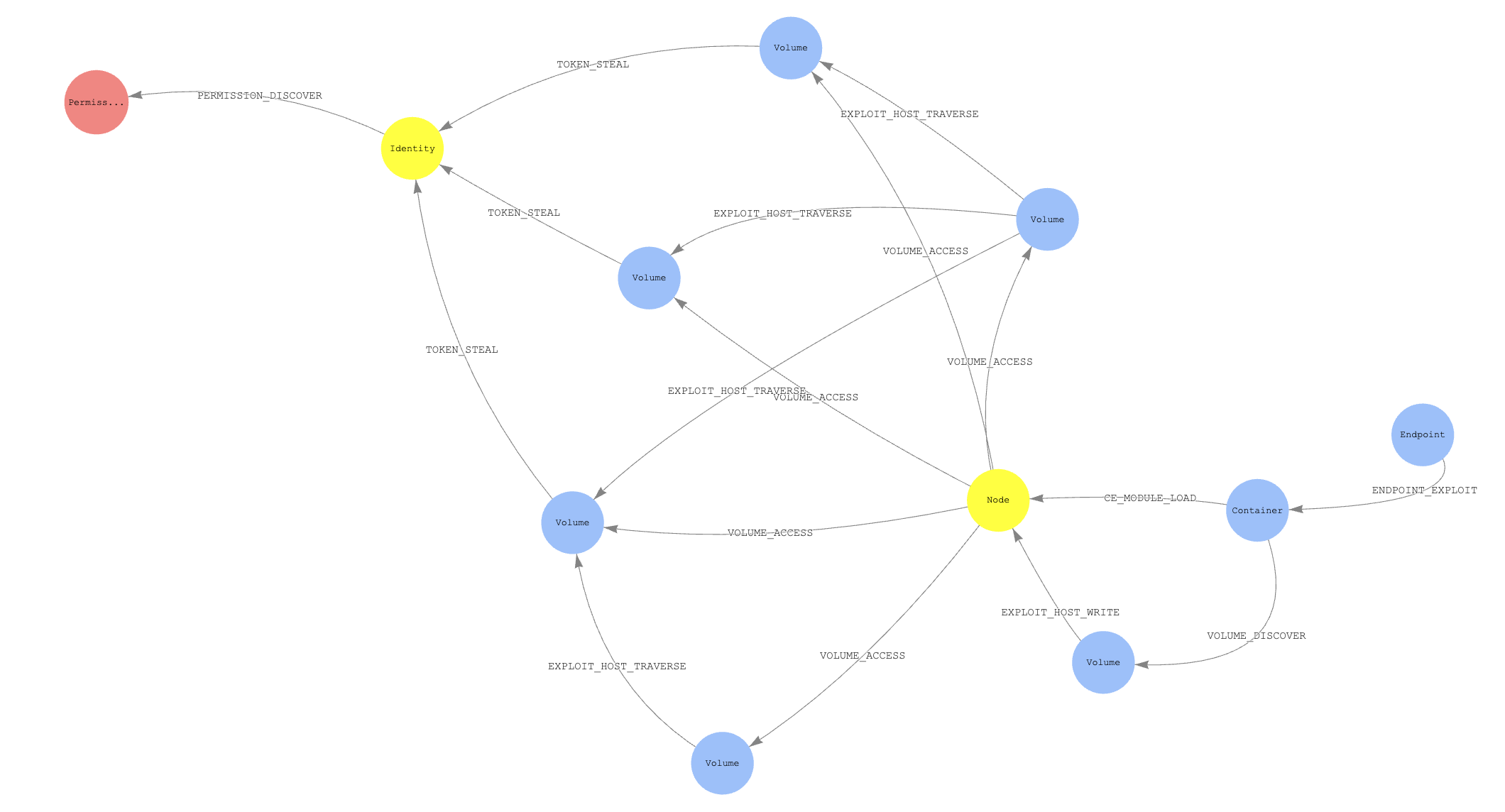Select a target Kubernetes cluster, either:
- Using kubectx
- Using specific kubeconfig file by exporting the env variable:
export KUBECONFIG=/your/path/to/.kube/config
Download binaries are available for Linux / Windows / Mac OS via the releases page or by running the following (Mac OS/Linux):
wget https://github.com/DataDog/KubeHound/releases/download/latest/kubehound-$(uname -o | sed 's/GNU\///g')-$(uname -m) -O kubehound
chmod +x kubehoundMacOS Notes
If downloading the releases via a browser you must run e.g xattr -d com.apple.quarantine kubehound before running to prevent MacOS blocking execution
Then, simply run
./kubehoundTo build KubeHound from source instead
Clone and build this repository:
git clone https://github.com/DataDog/KubeHound.git
cd KubeHound
make kubehoundThe built binary is now available at:
bin/build/kubehoundFor more advanced use case and configuration, see ADVANCED.md To view the generated graph see the Using KubeHound Data section.
To run KubeHound, you need a couple dependencies
- Docker
>= 19.03 - Docker Compose
V2
To view a sample graph demonstrating attacks in a very, very vulnerable cluster you can generate data via running the app against the provided kind cluster:
make sample-graphTo view the generated graph see the Using KubeHound Data section.
To query the KubeHound graph data requires using the Gremlin query language via an API call or dedicated graph query UI. A number of fully featured graph query UIs are available (both commercial and open source), but we provide an accompanying Jupyter notebook based on the AWS Graph Notebook,to quickly showcase the capabilities of KubeHound. To access the UI:
- Visit http://localhost:8888/notebooks/KubeHound.ipynb in your browser
- Use the default password
adminto login (note: this can be changed via the Dockerfile or by setting theNOTEBOOK_PASSWORDenvironment variable in the .env file) - Follow the initial setup instructions in the notebook to connect to the KubeHound graph and configure the rendering
- Start running the queries and exploring the graph!
We have documented a few sample queries to execute on the database in our documentation.
You can query the database data in your python script by using the following snippet:
#!/usr/bin/env python
import sys
from gremlin_python.driver.client import Client
KH_QUERY = "kh.containers().count()"
c = Client("ws://127.0.0.1:8182/gremlin", "kh")
results = c.submit(KH_QUERY).all().result()You'll need to install gremlinpython as a dependency via: pip install gremlinpython
- For an overview of the application architecture see the design canvas
- To see the attacks covered see the edge definitions
- To contribute a new attack to the project follow the contribution guidelines
KubeHound was created by the Adversary Simulation Engineering (ASE) team at Datadog:
With additional support from:
- Christophe Tafani-Dereeper @christophetd
We would also like to acknowledge the BloodHound team for pioneering the use of graph theory in offensive security and inspiring us to create this project.

